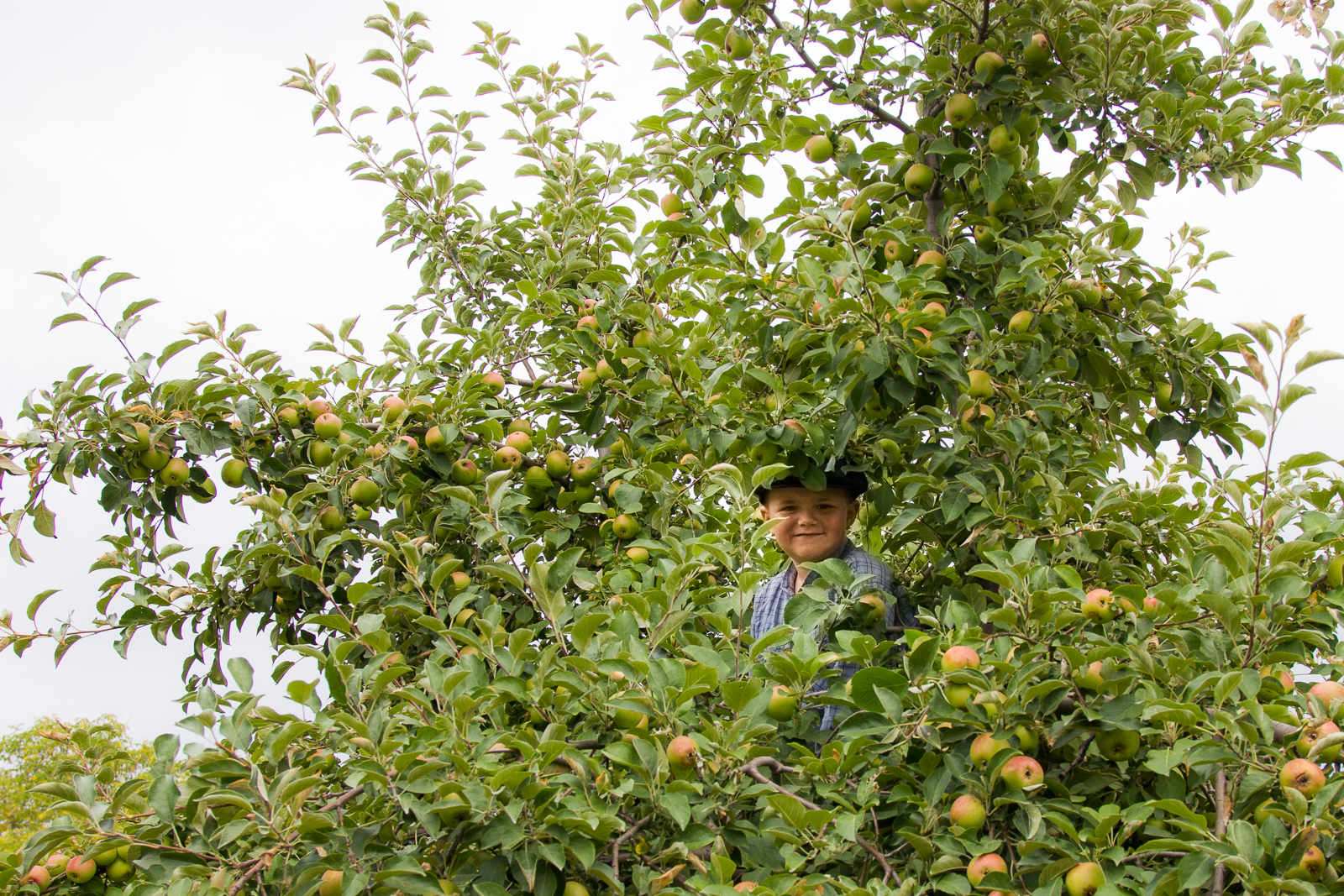
After our most enjoyable detour to Edmonton for some family business we headed south. We wanted to leave Canada again and on our way go through the Banff National Park again to see if we might have more luck with the weather then. At the first day we didn’t get too far and stopped for the night at Rocky Mountain House. This town got it’s mildly unusual name by an old fort that was located there from 1799 to 1875 that was part of the trading network of the famous Hudson Bay Company. Since we were interested to learn more about this bit of history we visited the small historical site where the remains of the fort could be found. Actually there were even remains of several fortified trading posts, some of them also belonging to the Hudson Bay Company’s direct contestants the North West Company. Both of them had needed a trading post in this area to barter goods with several First Nation tribes. The indigenous people would trade furs for other goods like knives, kettles, beads, needles and blankets. The furs would then be pressed and shipped to Europe. At first by bringing them along the rivers to the sea which was a long and hard work and then to Europe. That way a lot of money was made even long before the country of Canada existed and before there was some sort of general infrastructure in place.
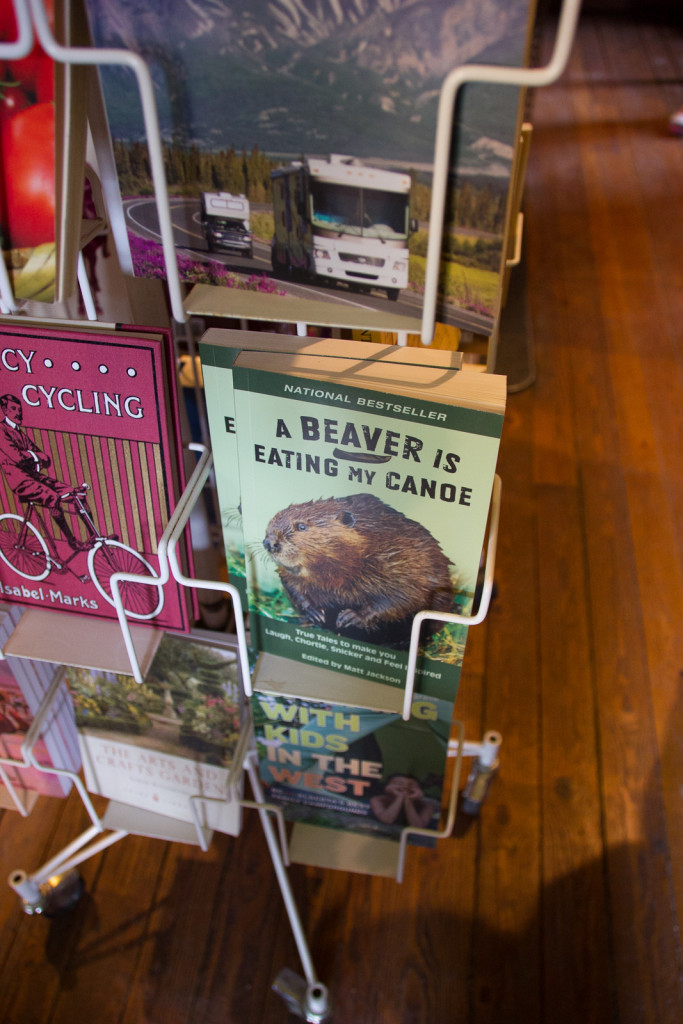
While we looked at the remains of the old trading posts and exhibits we were also able to try some bannock. That is a kind of bread the fur-traders made and it’s pretty good. There isn’t really much left of the old trading posts and nothing much to see but the entrance fee is really cheap and the small museum belonging to the site is very well done. The history of the Hudson Bay Company is quite interesting since it‘s probably one of the oldest companies of the world that is still in business. It was founded in 1670 and for much of it’s history is has been mainly a fur trading company and has dominated the fur trade in the English and British controlled parts of North America for several centuries. For quite some time it was also effectively the government of some areas of North America that only later had been claimed by European states and the USA. For a while it was also the largest landowner of the world and the area it owned made up about 15% of North America. In the late 19th century much of it’s territory made up the largest chunk of the newly formed Dominion of Canada in which the company again was the largest landowner. Thus it has become an important of the history of Western Canada and the United States. It’s traders and trappers went exploring early and made contact with many groups of indigneous peoples. Often the trading posts spawned lasting settlements just like it had happened with Rocky Mountain House that still exists today long after the Hudson Bay trading post had been closed down. Today the Hudson Bay Company owns several chains of retail stores in North America and has even stretched it’s reach to Germany lately by buying the Galeria Kaufhof chain.
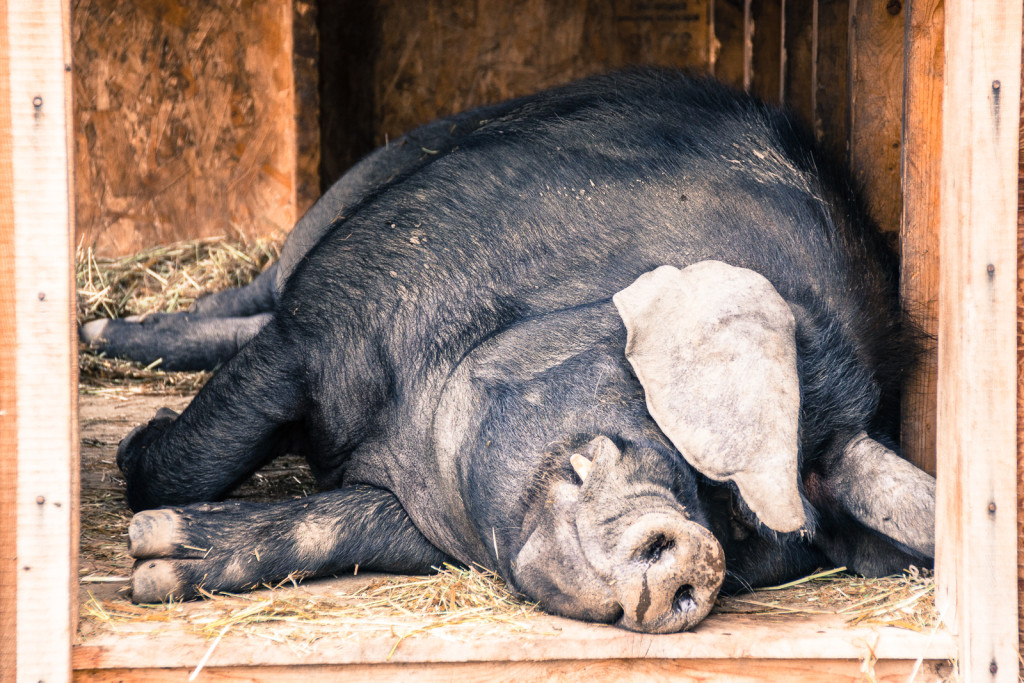
From Rocky Mountain House we drove west and came through an area where we had already been before. We entered Banff National Park from the east at Saskatchewan Crossing. This part we alreay described in our last article about the Banff and Jasper parks to make things a bit easier.
When we had left Banff again we came through the Kootenay National Park. Since it was still gray and pouring with rain we didn’t even stop there. When we looked at our map to see where we might best cross the border into Montana we noticed that Fort Steele was lying along the way. We had seen some ad for this little town before we had gone to the Purcell Wilderness and knew that it was some kind of heritage town. We decided to have a look and were pleasantly surprised. It is a whole small town from the year 1890. Some of the buildings are still original, others have been rebuilt or brought there from the nearer vicinity. The houses are furnished according to the era and there are some town inhabitants wandering around wearing clothes from the end of the 19th century. Some of them are also part of a cast that plays some scenes from town life in 1890 at certain times during the day. You can walk around freely on your own and explore the place at your own pace. We got a very good glimpse into the everyday life of those past times which was very interesting and entertaining. There was also a candy shop where we were even able to buy some salt licorice which was a hard thing to finde since leaving Germany. All in all the Fort Steele Heritage Town is very well done and absolutely worth a visit.
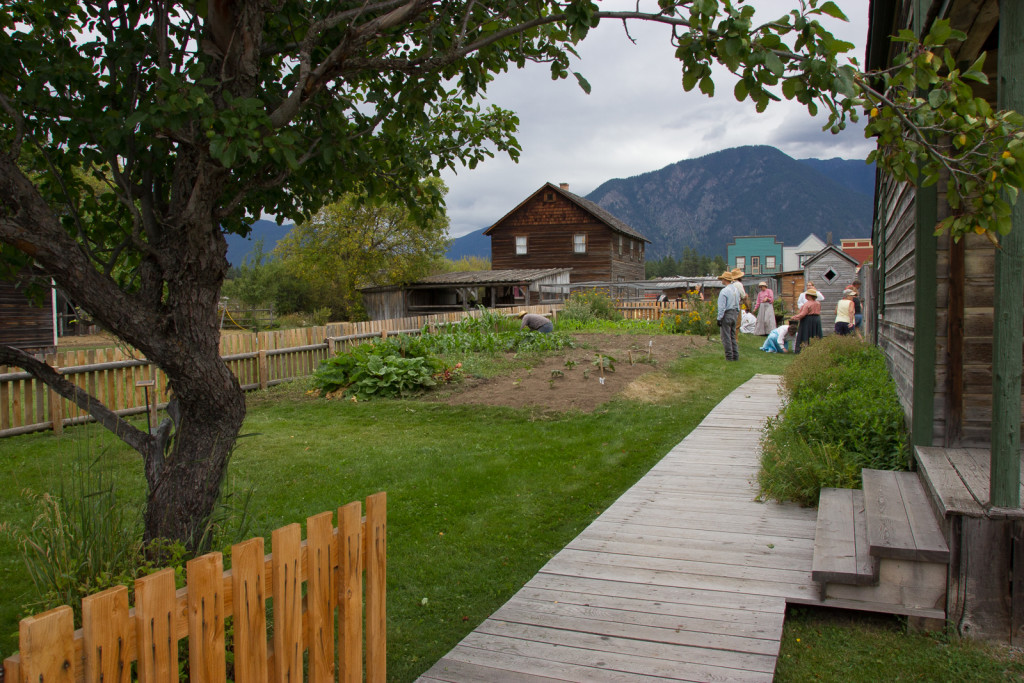
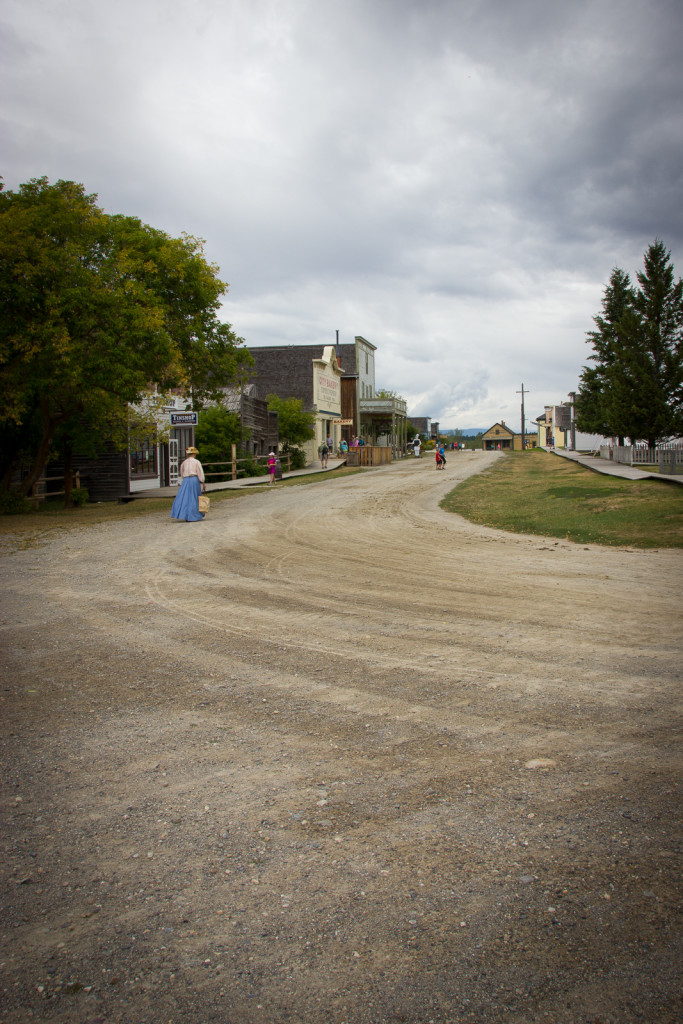
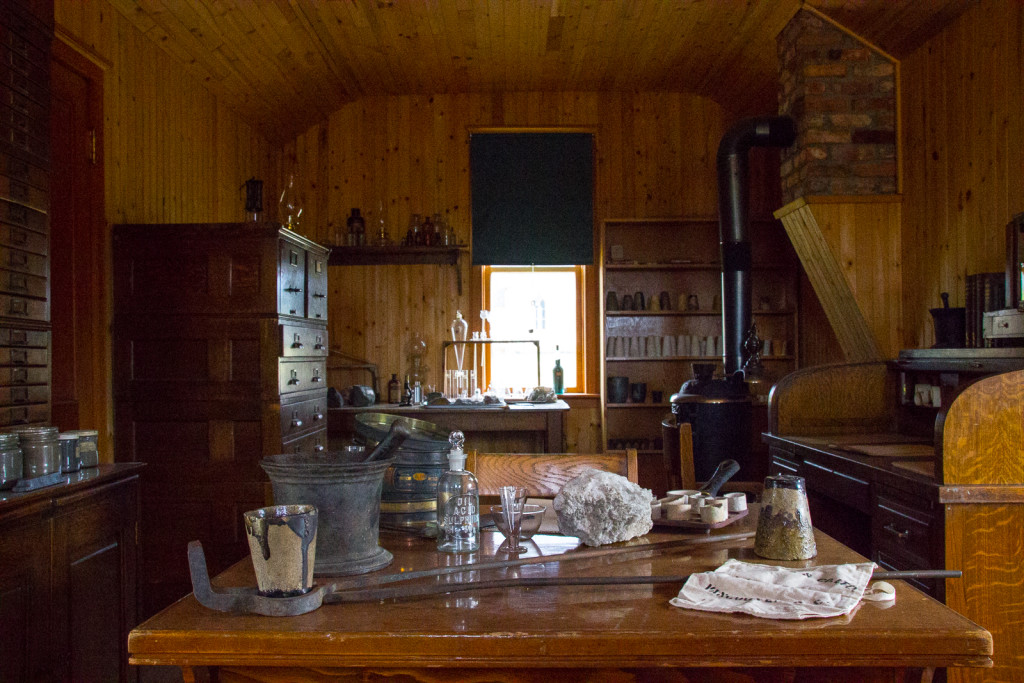
After this last unplanned station in Canada it was time to leave again. We had spent roughly six weeks in Canada and only gotten a glimpse at this huge and enchanting country but we felt that our time was starting to run out and so we headed back into the USA. We chose a pretty tiny border crossing and took advantage of some duty free shopping there. Had we realized how much cheaper the alcohol in that shop right at the border was, we would have bought more. Well, be that as it may after our quick shopping tour of some cheap schnapps and perfume we pulled up to the booth at the border crossing and since we already knew that the US immigration officers took their job very seriously we had come prepared again. We carried all relevant documents with us as printouts and had almost rehearsed our answers to the common questions. As it turned out we were quite welcome to enter the USA again with our visa but the tomatoes and bell peppers we had bought in Canada weren’t. We had to hand them over to the official and after that we were welcomed to the USA.
As an afterthought he then said that we should probably better get our passports stamped since we were going to stay for a longer time in the USA. This meant that we had to park our car and go into the border office building to hand over our passports. There another young officer took over and apparently he had some difficulty to come to grips with two germans travelling through the USA for more than two or three weeks and even having visa. We were told to wait and that we did as time dragged on. A nationwide breakdown of the Homeland Security computer system didn’t help matters and after we had waited for maybe twenty minutes the first officer came in and took over again. He rolled his eyes two times in our direction while smiling and seemed inclined to make things a bit easier for us. After he had scanned our fingerprints again (that was the third time since our visa application back in Frankfurt) we got our stamps and were allowed to stay in the USA for another six months.
German version – deutsche Version
Nach unserem sehr schönen Umweg nach Edmonton für einen Familienbesuch wandten wir uns nach Süden. Wir wollten Kanada wieder verlassen und auf dem Weg außerdem noch einmal zurück in den Banff Nationalpark um zu sehen, ob wir dieses Mal mehr Glück mit dem Wetter haben würden. Am ersten Tag kamen wir nicht sehr weit und hielten für die Nacht in Rocky Mountain House an. Dieser Ort erhielt seinen etwas ungewöhnlichen Namen von einem alten befestigten Handelsposten, den es dort 1799 bis 1875 gegeben hatte und der Teil des Handelsnetzwerks der berühmten Hudson Bay Company gewesen war. Da wir neugierig darauf waren mehr über diesen Teil der Geschichte zu erfahren, besuchten wir das recht überschaubare historische Gelände, auf dem das Fort einmal gestanden hatte. Es gab sogar Überreste von gleich mehreren Forts, von denen einige zur Hudson Bay Company gehörten und andere zu deren direkten Konkurrenten, der North West Company. Beide Unternehmen hatten damals einen Handelsposten in der Gegend gebraucht um Warenhandel mit einigen Stämmen der Ureinwohner zu betreiben. Die Indianer brachten Felle und erhielten im Gegenzug Waren wie Messer, Kochtöpfe, Glasperlen, Nähnadeln und Decken. Die Pelze presste man dann in Ballen und transportierte sie zunächst über Flüsse zur See, was eine äußerst anstrengende und langwierige Angelegenheit war. Anschließend verschiffte man sie nach Europa. Auf diese Weise wurde eine Menge Geld verdient, lange bevor es das heutige Land Kanada überhaupt gab, oder irgendeine Form von Infrastruktur exisitierte. Als wir die Überreste und Ausstellungsstücke besichtigten, konnten wir außerdem etwas Bannock kosten. Bannock ist ein recht schmackhaftes, simpel gemachtes Brot, das die Pelzhändler seinerzeit zubereiteten. Von den einstigen Handelsposten ist heute kaum etwas übrig und es gibt nicht wirklich viel zu sehen, aber der Eintritt ist sehr günstig und das zugehörige kleine Museum ist außerdem ziemlich gut gemacht.
Von Rocky Mountain House fuhren wir weiter nach Westen und somit durch eine Gegend, in der wir bereits gewesen waren. Wir betraten den Banff Nationalpark von Osten bei Saskatchewan Crossing. Diesen Abschnitt unserer Reise haben wir bereits in unserem letzten Artikel zu den Banff und Jasper Parks beschrieben um es uns etwas einfacher zu machen.
Als wir Banff wieder verlassen hatten, kamen wir im Anschluss durch den Kootenay Nationalpark. Da der Himmel immer noch grau war und es in Strömen regnete, hielten wir dort nicht einmal an. Wir schauten auf unsere Karte um zu sehen wo wir am besten die Grenze nach Montana überqueren würden und bemerkten dabei, dass Fort Steele auf dem Weg lag. Wir hatten eine Werbeanzeige für diesen Ort gesehen bevor wir in die Purcell Wildnis gefahren waren und wussten daher, dass es eine Art Freilichtmuseum war. Wir beschlossen kurzerhand dort Halt zu machen und uns das Ganze anzusehen und waren sehr positiv überrascht. Es handelt sich um einen kompletten kleinen Ort aus dem Jahr 1890. Einige der Gebäude sind noch original, während andere wieder aufgebaut wurden oder aus der näheren Umgebung hertransportiert worden waren. Die Häuser sind alle der Epoche entsprechend eingerichtet und in dem Örtchen liefen einige Bewohner in Kleidern aus der Zeit zu Ende des 19. Jahrhunderts herum. Von diesen gehören einige wiederum zu einer kleinen Schauspielertruppe, die einige Szenen aus dem täglichen Leben der historischen Stadt zu bestimmten Zeiten des Tages nachspielen. Man kann ganz frei in Fort Steele herumlaufen und den Ort im eigenen Tempo erkunden. So bekamen wir einen sehr guten Einblick in den Alltag dieser vergangenen Zeiten, was sehr interessant und zudem auch höchst unterhaltsam war. Es gab sogar einen Süßigkeitenladen, in dem wir Salz-Lakritz kaufen konnten, was leider eine absolute Seltenheit war seitdem wir Deutschland verlassen hatten. Alles in allem ist das Fort Steele Freilichtmuseum äußerst gut gemacht und ein Besuch ist absolut lohnenswert.
Nach dieser letzten spontanen Zwischenstation in Kanada wurde es Zeit für unseren Abschied. Wir hatten knapp sechs Wochen in Kanada verbracht und somit nur einen sehr kurzen Blick auf dieses riesige und wundervolle Land werfen können. Wir hatten aber mittlerweile das Gefühl, dass die Zeit drängt und uns nicht mehr viel davon übrig bleibt, also kehrten wir zurück in die USA. Wir hatten uns einen recht kleinen Grenzübergang ausgesucht und nutzten die Gunst der Stunde für ein wenig duty free shopping. Wenn wir da schon gewusst hätten wieviel billiger der Alkohol in dem Lädchen an der Grenze war, hätten wir mehr davon gekauft. Wie dem auch sei, nach einem Schnelleinkauf von etwas kostengünstigem Schnaps und Parfum rollten wir zum kleinen Häuschen des Grenzbeamten und da wir ja bereits wussten, dass die amerikanisschen Einwanderungsbeamten ihren Job sehr ernst nahmen, waren wir wieder gründlich vorbereitet. Wir hatten alle relevanten Dokumente und Ausdrucke dabei und hatten unsere Antworten auf die gängigen Fragen beinahe auswendig gelernt. Wie sich herausstellte, waren wir erneut ziemlich willkommen in die USA einzureisen aber die Tomaten und Paprika, die wir in Kanada eingekauft hatten, waren es nicht. Wir mussten sie dem Beamten aushändigen und wurden danach in den Staaten willkommen geheißen.
Quasi als Nachgedanke fiel dem Beamten aber dann noch ein, dass wir besser neue Stempel in unsere Pässe bekommen sollten, da wir ja für eine längere Zeit bleiben wollten. Das hieß, dass wir unser Auto abstellen und in das Grenzbüro hineingehen mussten, um unsere Pässe dort abzugeben. Ein anderer junger Beamter übernahm an dieser Stelle und scheinbar hatte er seine liebe Müh’ damit zwei Deutsche in sein Weltbild zu integrieren, die für mehr als zwei oder drei Wochen durch die USA reisen wollten und obendrein noch Visa hatten. Es hieß wir sollten bitte warten und das taten wir auch, während sich das Ganze in die Länge zog. Ein landesweiter Ausfall des Computersystems der Homeland Security machte den Vorgang auch nicht leichter und nachdem wir gut zwanzig Minuten gewartet hatten, kam Beamter Nummer Eins wieder rein und übernahm. Mit einem Lächeln verdrehte er zwei Mal seine Augen in unsere Richtung und schien geneigt zu sein uns alles etwas einfacher zu machen. Er scannte erneut unser Fingerabdrücke ein (das war seit dem Visa-Antrag in Frankfurt bereits das dritte Mal) und anschließend bekamen wir unsere Stempel in die Pässe und durften für weitere sechs Monate in den USA bleiben.
